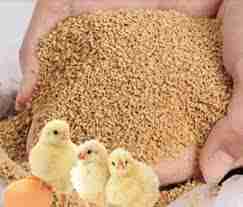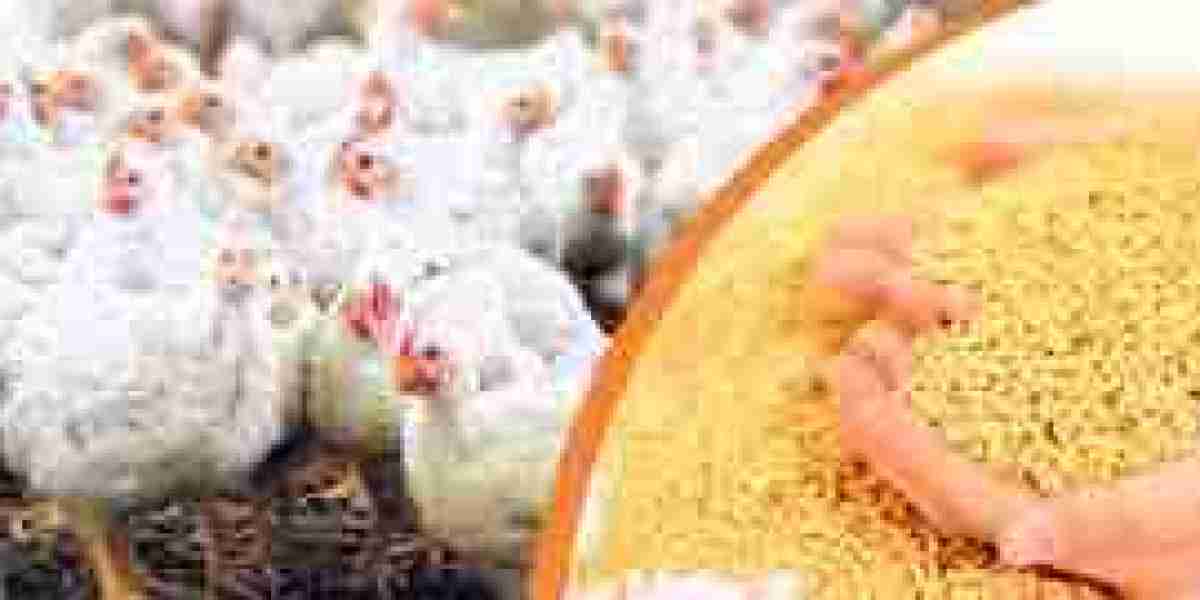The poultry feed market has experienced substantial growth in recent years, driven by increasing demand for poultry products and advancements in agricultural technology. However, the market is not without its challenges. Factors such as fluctuating raw material prices, environmental concerns, disease outbreaks, regulatory changes, and market competition pose significant threats to the poultry feed industry. Understanding and addressing these threats is crucial for feed manufacturers, poultry farmers, and other stakeholders to maintain a competitive edge and ensure the continued growth of the industry. This article explores the key threats to the poultry feed market and the strategies that can mitigate their impact.

1. Fluctuating Raw Material Prices
One of the most persistent threats to the poultry feed market is the volatility of raw material prices. The primary ingredients in poultry feed, such as corn, soybean meal, and wheat, are subject to global supply and demand fluctuations. Weather conditions, crop yields, and geopolitical factors can significantly impact the availability and cost of these raw materials.
For instance, poor harvests due to droughts, floods, or other adverse weather events can lead to shortages in key ingredients, causing prices to spike. Additionally, trade restrictions, tariffs, and supply chain disruptions can exacerbate these price fluctuations. As feed accounts for a significant portion of the overall cost of poultry production, rising feed costs directly affect farmers' profitability.
To mitigate the impact of fluctuating raw material prices, poultry feed manufacturers can explore alternative feed ingredients, such as alternative proteins (e.g., insect protein, algae, or plant-based proteins), which may be more stable in price. Additionally, adopting advanced feed formulations that reduce reliance on costly ingredients can help farmers maintain profitability despite market volatility.
2. Environmental and Sustainability Concerns
Sustainability has become a major focus in the agricultural sector, and the poultry feed industry is no exception. Traditional poultry feed production relies heavily on raw materials like soy, corn, and fishmeal, which have significant environmental impacts. The cultivation of soy and corn is associated with deforestation, land degradation, and high water consumption, while fishmeal production contributes to overfishing.
As environmental regulations become more stringent and consumers become more environmentally conscious, there is increasing pressure on poultry feed manufacturers to adopt sustainable practices. The production of feed with a lower carbon footprint and the use of alternative, more eco-friendly ingredients are gaining importance.
Failure to address sustainability concerns could lead to reputational damage for feed companies, decreased consumer trust, and the potential for stricter regulations. Additionally, the cost of adopting sustainable practices may be high, creating financial strain for poultry feed manufacturers, especially small to medium-sized companies.
To mitigate these threats, feed manufacturers must invest in sustainable sourcing practices, explore alternative feed ingredients, and adopt technologies that reduce the environmental impact of feed production. By shifting to more sustainable feed solutions, companies can meet regulatory requirements and align with consumer preferences, ensuring long-term competitiveness in the market.
3. Disease Outbreaks and Biosecurity Risks
Disease outbreaks, such as avian influenza and Newcastle disease, pose significant threats to the poultry industry. These diseases can lead to widespread poultry mortality, disrupt production, and result in significant financial losses for both poultry farmers and feed manufacturers. When poultry farms are affected by diseases, the demand for feed can drop as farms may reduce their flock sizes or temporarily shut down operations.
Additionally, disease outbreaks can lead to the imposition of trade restrictions, which may limit the export of poultry products to certain regions, further impacting the market. The increased focus on biosecurity and disease prevention in poultry farming also brings challenges in terms of higher costs for feed manufacturers who need to ensure that their feed ingredients meet stringent health and safety standards.
To combat the threat of disease outbreaks, poultry feed manufacturers and farmers must invest in robust biosecurity measures and adopt advanced monitoring and control systems. This includes ensuring that feed production facilities are free from contamination and implementing best practices for feed storage and transportation. Moreover, developing disease-resistant poultry feed formulations, which enhance immune function and support overall bird health, can help mitigate the impact of disease outbreaks.
4. Regulatory Challenges and Compliance
The poultry feed industry is heavily regulated by government authorities in most countries. These regulations cover a wide range of aspects, including the use of specific feed ingredients, the inclusion of additives, and the levels of contaminants such as heavy metals and pesticides. Compliance with these regulations is crucial for feed manufacturers to ensure their products are safe, effective, and legally acceptable in the markets they serve.
However, navigating the complex regulatory landscape can be challenging, particularly for companies operating in multiple countries with differing regulatory frameworks. Changes in regulations, such as stricter rules on the use of antibiotics in feed, the inclusion of genetically modified organisms (GMOs), or the use of certain feed additives, can have significant implications for feed formulations and production processes.
Non-compliance with regulatory standards can result in costly fines, product recalls, and damage to a company's reputation. For poultry feed manufacturers, the constant need to monitor and adapt to changing regulations can lead to increased operational costs and delays in product development.
To address regulatory challenges, poultry feed manufacturers must stay informed about changing regulations and invest in compliance measures to meet safety and quality standards. Collaborating with regulatory bodies, engaging in industry groups, and implementing quality management systems can help companies navigate the complex regulatory environment and mitigate the risk of non-compliance.
5. Market Competition and Price Pressure
The poultry feed market is highly competitive, with numerous players vying for market share. Larger, established companies often have the advantage of economies of scale, enabling them to offer lower prices and secure long-term contracts with major poultry farms. Smaller companies may struggle to compete on price, and as a result, face pressure to lower costs without compromising on feed quality.
Price competition is particularly intense in emerging markets, where price sensitivity is high, and farmers are looking for cost-effective feed solutions. This can make it challenging for feed manufacturers to maintain healthy profit margins, especially when raw material costs are rising, and margins are already tight.
To combat the threat of price competition, feed manufacturers can differentiate their products through innovation, offering specialized feed formulations that improve poultry health, boost productivity, or meet specific market demands, such as organic or non-GMO feed. By focusing on value-added solutions and differentiating based on quality rather than just price, companies can retain customer loyalty and maintain profitability.
6. Supply Chain Disruptions
Supply chain disruptions, such as those caused by natural disasters, geopolitical tensions, or global pandemics (like COVID-19), can severely impact the poultry feed market. These disruptions can lead to shortages of raw materials, delays in production, and higher transportation costs, all of which affect feed availability and prices.
The COVID-19 pandemic, for example, led to labor shortages, transportation delays, and disruptions in global trade, which impacted the availability of key feed ingredients. These disruptions have highlighted the vulnerability of the global supply chain and the need for more resilient systems.
To reduce the risk of supply chain disruptions, poultry feed manufacturers can diversify their supplier base, invest in local sourcing of raw materials, and build flexible, adaptive supply chains that can respond quickly to unexpected events. Strategic partnerships with reliable suppliers and maintaining adequate inventory levels can also help mitigate the effects of supply chain disruptions.
Conclusion
While the poultry feed market presents significant growth opportunities, it also faces a range of threats that can impact profitability and market stability. Fluctuating raw material prices, environmental concerns, disease outbreaks, regulatory challenges, market competition, and supply chain disruptions all pose risks to the poultry feed industry. By adopting strategies such as sustainable sourcing, technological innovation, compliance with regulations, and resilience in supply chain management, feed manufacturers and poultry farmers can navigate these challenges and continue to thrive in a rapidly evolving market.




